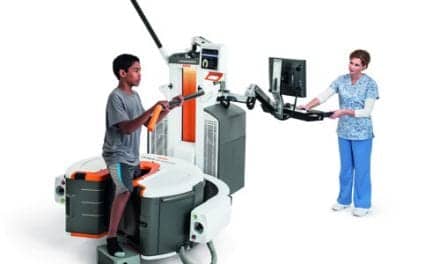A new study published in the journal Radiology assesses the emergency response of Brigham and Women’s Hospital radiology team during the Boston Marathon bombings. While researchers found the overall response from the imaging team to be generally strong, they identified areas for improvement that have since translated into new policies and procedures.
Lead researcher John Brunner, MD, was serving as an emergency radiology fellow at Brigham and Women’s Hospital during the bombings on April 15, 2013. Designated as a level 1 trauma center, the hospital received 40 victims within a few hours of the bombing. Many patients required imaging with x-ray and computed tomography (CT) to identify injuries caused by the use of shrapnel-embedded explosives at the marathon’s finish line. Of 40 patients, 31 (78%) received imaging, with 57 x-rays performed on 30 patients and 16 CT scans performed on seven patients.
To meet the sudden imaging demand, the hospital mobilized additional staff, including attending radiologists, radiology fellows and residents, and x-ray and CT technologists. In addition to standard emergency imaging equipment, including two portable x-ray machines, two fixed digital x-ray units, an ultrasound machine, and a CT scanner, the hospital located two CT scanners and additional portable x-ray units elsewhere in the facility. A radiologist was stationed at each of the three CT scanners to provide immediate interpretations.
Researchers found that the turnaround time for CT scans immediately following the bombing averaged 37 minutes, compared to the annual median of 72 minutes during normal operations. In contrast, the average x-ray exam turnaround time of 52 minutes exceeded the routine median of 31 minutes, likely due to the backup caused by all portable x-ray machines having to rely on a single x-ray plate readout device.
Following the bombings, the hospital has replaced its portable x-ray units with digital radiography equipment with wireless image transfer to shorten exam time. In addition, the facility overhauled its existing patient identification system, which led to several duplicative imaging orders during the emergency. Staff now rely on a combination of color, gender, and numeral to track unidentified patients.
“It’s important to analyze our response to events like the Boston Marathon bombing to identify opportunities for improvement in our institutional emergency operations plan,” said senior author Aaron Sodickson MD, PhD, emergency radiology director at Brigham and Women’s Hospital.
“The Boston Marathon Bombing: After-Action Review of the Brigham and Women’s Hospital Emergency Radiology Response” is published in Radiology.





